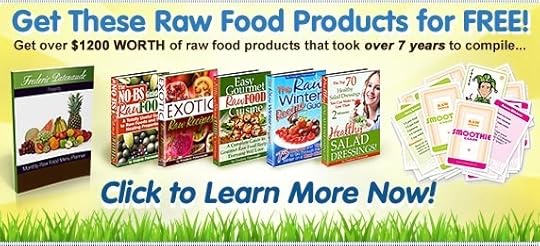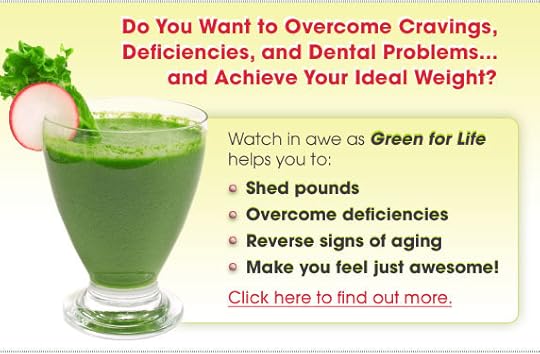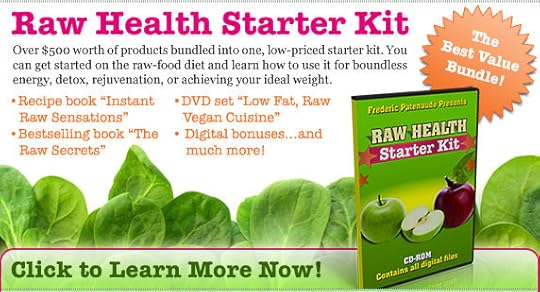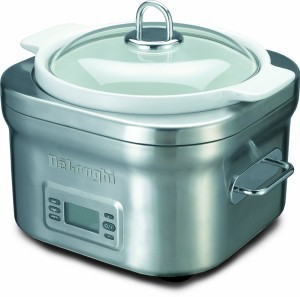Frederic Patenaude's Blog, page 35
January 23, 2014
The All-Potato Diet
It sounds completely ridiculous. It sounds completely counter intuitive and counter productive.
But a diet composed of only white potatoes is one of the best mono-diets one can follow to improve their health and lose body fat. In this article, I will redeem the “evil” white potato as an incredible food that you can use to reach your health goals faster. I won’t suggest that you try an all-potato diet, but will list some examples of people who did, with some pretty unexpected results.
The Evil Potato
One of the first foods that someone on a diet learns to avoid, by well-meaning friends, relative, doctors, and diet books, are potatoes. Potatoes are rich in complex carbs, which turn into sugar in the body, and make you fat. Right? Well not so fast.
Nobody has ever gotten obese eating potatoes. Rather, it’s all the stuff that people put on potatoes that’s to blame. I’ll argue that displacing other fatty foods with potatoes can only result in better health outcomes.
If you only ate potatoes all day, to get all of your 2000 calories, you would get:
- 50 grams of protein, contain all the amino acids the body needs (that’s 10% of your calories)
- 2% of your calories would come from fat
- Well over the RDAs of the following nutrients: C, copper, iron, magnesium, manganese, niacin, phosphorus, potassium, thiamin, and zinc.
- You’d also get all of the other essential nutrients, and without falling seriously short, except in the case of vitamin E and A.
- Calcium intake would be at 200 mg, which is low, but your diet will have a super-positive alkaline balance, and you wouldn’t be at a calcium loss.
- Your fiber intake would be at 40 grams a day (the average intake is only 15 grams)
Let’s be clear that no one food is complete enough to be your only source of nourishment for a lifetime. But as a food you could live on for months at a time, potatoes are pretty close to ideal, compared to most other choices.
Potatoes have a very high satiety factor. Experiments have shown that people feel incredibly satisfied when they eat potatoes. That is why it’s impossible to get fat eating potatoes.
Let’s take a look at all-potato diets:
1) The 1927 experiment.
In 1927, a study was published by a researched name. Stanislaw Kazimirz Kon, who studied the effects of an all-potato diet on the human body. A healthy man and woman in their twenties, who were very athletic, were put on a diet where most of their calories came from potatoes. To that they added only a few fruits, and butter or oil.
Now, this wasn’t an all-potato diet, but it’s important to note that although fat was added to the diet, this fat provided no protein. Yet, on a diet where virtually all of the protein was derived from potatoes, it was found that protein intake was adequate. The entire experimented lasted almost 6 months, and the participants said that “they did not tire of the potato diet or had any cravings for change.”
2) Twenty Potatoes a Day
A couple of years ago, a potato farmer by the name of Chris Voigt got sick and tired of the “Potato-bashing” common in governmental programs, and decided to prove everybody wrong by going on an all-potato diet for 60 days in a row.
Eventually he added a bit oil to the diet. Again, oil provides no nutrients and no protein. He used salt and seasonings on the potatoes.
It’s interesting to note that even when one can eat unlimited quantities of potatoes, it still becomes very difficult to get enough calories.
On a diet composed almost exclusively of potatoes, he experienced the following benefits:
Weight dropped from 197 to 176
Glucose of 104 to 94
Cholesterol went from 214 to 147
Triglycerides from 135 to 75
Blood pressure was 112 over 70 by the end of the experiment.
3) Paleo Promoters Go All-Potatoes
Paleo promoters are not typically big fans of carps, but recently some paleo bloggers decided to go on an all-potato diet to lose weight and body fat. One commenter claims to have followed a potato diet for 30 days, and lost in the process 11 pounds of fat, gained 8 pounds of lean body mass, and reduced his body fat by 6%.
Author Stephan Guyenet summarizes the benefits of an all-potato diet as follows:
The potato diet works because:
1. Potatoes have a low calorie density and a high satiety value per calorie.
2. Eating a diet that is composed almost exclusively of one food is low in reward, low-moderate palatability, low in variety, and has a high sensory-specific satiety. Even if you dress up your potatoes as well as you can, you’re still eating potatoes. This tends to reduce calorie intake.
3. Potatoes are nutritious enough (including complete protein) that they can be the sole source of calories for an extended period of time. However, they are not a complete source of all micronutrients and deficiencies will eventually arise.
It would be interesting if some of my readers tried an all-potato diet and shared their results, but I’m not specifically recommending it.
Now, someone could say that we could design a diet based on any one food and still get great results because it would force the person to eat less in general. But I say that it would only be possible to get such good results if the food was healthy to begin with.
An all-apple diet would probably lead to amazing health results, but people would get tired of it faster because apples are not concentrated enough in calories.
If the food wasn’t healthy to begin with, it could lead to disastrous results. Can you imagine the results of an “all-ice-cream” or “all bacon” diet? People would get tired of it much faster, too.
My point is that potatoes should not be feared. All of the hype about potatoes being junk food or too high on the glycemic index fade when faced with these facts:
1) Entire cultures in South America, such as the Quechua, have eaten potatoes as the main source of their calories and enjoyed great health.
2) Many people have tried an all-potato diet composed exclusively of basic, commercial, white potatoes, and have only experienced positive results.
3) Although no food contains every single nutrient that the body needs in exactly the right amount for all phases of life, potatoes come pretty close to meeting most requirements.
January 21, 2014
How to Conduct a Five Day Water Fast
Last December, right before Christmas, I went to the TrueNorth Health Center in California to undergo a five-day water fast.
I stayed 7 days at the center (five days of fasting and two days of re-feeding), and thoroughly enjoyed my experience.
This is not the first time I fasted. I’ve done several 3-day fasts, and a long 23-day fast, back in 2005.
I find that occasional water fasting is a great “reset button” and for me acts as a powerful spiritual practice.
During a fast, I always find clarity about what I should do next in my life. In this sense, every fast has been a most incredible experience.
I didn’t do it for health reasons, although earlier last year I experienced some bouts of insomnia. During the fast, I slept like crazy!
And if you fast in a controlled environment like the TrueNorth center, you get lots of support and meet amazing people. This in itself is a good enough reason to try a water fast.
The TrueNorth Center has a team of top-notch physicians that overlook every aspect of your fast.
Dr. Michael Klaper, one of the most trained M.Ds and big-time plant-based diet advocate, works full-time here at the center.
Dr. Alan Goldhamer is an extremely knowledgeable MD who directs this center and is one of the worldwide experts on water fasting.
There are other extremely qualified health professional here as well.
The fast is fully supervised. Blood tests and a full consultation with one of the doctors insures that you’re healthy enough for fasting. And every day doctors come to check up on you.
There are daily health lectures to keep you busy, and of course you get to meet people from all over the world who are also here fasting, or during another type of cure like a juice fast.
The most incredible thing is to hear the stories of people who have fasted and recovered from serious conditions, when nothing else they tried has worked before. I’ve already heard several of those stories first-hand from people here, at different stages of their health journey.
Why Not a Juice Fast?
Some people go to TrueNorth to do a juice fast. But I find water fasting to be more powerful. Five days of water fasting probably gives you the same results as 10 days or more of juice fasting, because of the unique physiological adaptations that occur only during fasting.
1) During a water fast your body goes into full fat-burning mode. If you stay inactive during the fast there is no muscle loss.
2) A water fast activates the detox systems. Enzymatic changes occur in the body that boost your “detox systems” – getting rid of unwanted substances in the body (excess cholesterol, uric acid, and environmental toxins, etc.). These changes persist after a fast.
3) Insulin sensitivity improves during a fast. A water fast has a powerful effect on insulin, making it more effective.
4) A water fast flushes out excess sodium and dramatically lowers blood pressure. It’s the most powerful, clinically-proven cure for high-blood pressure.
5) Fasting has a normalizing effect on the autonomic nervous system. In simple terms: it lowers or eliminates stress-related problems such as anxiety and digestive disturbances.
6) Water fasting creates neuroadaptation to healthier food. After a fast, any food tastes good! Including plain lettuce. It makes it much easier to switch to a healthier, lower salt, oil-free diet. That’s certainly the reward of the faster: every simple meal after the fast tastes like heaven!
How to Conduct a 5-Day Fast
All the physicians working at TrueNorth do not formally advise anyone to fast without supervision for more than three days. And of course, many people should never fast (ask your doctor).
A five-day fast, however, is generally safe and could technically be conducted at home if you have previous experience with fasting and are in a state of good health.
During the fast, I didn’t experience any major negative symptoms. I had no nausea, no headaches, no insomnia, and no physical discomforts. I only felt a bit dizzy after the first two days when getting up, and had of course much lower physical energy, and lots of thoughts about food.
Day 1
I started the fast before I showed up at the center, so by the time I arrived, I was already 18 hours into my fast. The first day is generally easy. You can be active and thoughts about food fade away relatively quickly.
Day 2
The second day is more difficult due to the fact that the body has not yet shifted into fasting metabolism. I was thinking about food and finding every hour extremely long and boring! I entertained myself by watching a lot of health lectures.
Day 3
Day three went similar to day 2, but with reduced hunger.
Day 4
On day four I had massive cravings at night. I could not stop thinking about food!
Day 5
The last day of the fast went great! I had decent energy and almost no food thoughts.
I broke the fast on the morning of day 6 with a watermelon-celery juice that tasted like heaven. I only had juice and a salad that day.
On the second day of refeeding I also had fruit and some steamed vegetables.
It took me about a week after the fast to feel like my body and digestion was fully back to “normal.” I did not have any bowel movement during the fast, but it all resumed during the refeeding period.
During the first three days of the fast, it was a mental game more than anything. Although I had no physical symptoms, my mind was tricking me into thoughts of “giving up.” I wasn’t even considering giving up, but maybe I would have if I had attempted the fast at home.
Fasting is like a marathon. It’s a mental game. But at some point, you get a “second wind” and the fast becomes easy.
Of course, fasting should never be viewed like a marathon where you’re attempting to break some kind of goal. One must fast in a very scientific matter, for health reasons only.
During the fast, I had LOTS of ideas. I wrote a lot, organized, and also slept a lot, with very vivid dreams.
I think fasting five days was a great experience that I would easily do again every year or two. Fasting 23 days, like I did at the age of 28, was much more difficult and not something I feel ready to attempt again anytime soon.
Fasting is not a “fun” thing to do by any stretch of the imagination. It’s hard work. But it yields amazing health benefits if you do it correctly.
The only fasting center that I recommend is the True North Health Center. To find out more, go to:
http://www.healthpromoting.com
Note: I’m in no way affiliated with the True North Health Center. I do not get any compensation for writing this article.
January 16, 2014
How to Easily Calculate Your Fat Intake
A few years ago, I was at a raw food conference, and the topic of fat came up. Many of the participants came to me, after a lecture, and told me that they enjoyed the information, but they didn’t think that they ate that much fat.
In the lectures, I talked about the major health problems that raw foodists run into when they eat a high-fat diet. One of the main issues seemed to be low energy and poor insulin response. After months or years on this diet, these people could no longer enjoy fruit without seeing their blood sugar spike and crash.
When we checked their fat consumption, it was often close to 60% of total calories. To put this in perspective, the Standard American Diet (often called the “SAD Diet” for a good reason!) is around 35-40% fat.
I had people come to me, thinking they were eating a low-fat diet, but when we analyzed their intake, it was closer to 30 or 40%.
(By the way, although I have known about the problems with fat consumption for years, since my book “The Raw Secrets” came out in 2002, it was not until I worked with Dr. Doug Graham that it finally made complete sense. I recommend his book “The 80-10-10 Diet” to understand how a low-fat raw vegan diet works).
Now, you can spend all day entering numbers into a nutrition database, but I’ve got a simple system for you to track your fat consumption.
This system applies to raw or cooked vegan diets where the only calories come from whole foods. This system will not work if you consume any of the following foods:
- Restaurant foods where oil was used
– Processed foods containing oil or fat
– Animal foods
Raw foodists eating only fruits, vegetables, nuts and seeds can use this system. Vegans consuming only grains, vegetables, fruits, beans, nuts and seeds can also use this system.
It’s pretty simple.
First, let’s clarify what a low-fat diet is. Sometimes you hear in the media that “low-fat diets don’t work.” But, when we look closely at those “low-fat diets,” we find that they are around 25 to 30% fat — which is not low at all.
A low-fat diet is a diet where no more than 15% of your daily calories come from fat. There’s room to wiggle here. Some people keep their fat intake below 10%, and others like it around 15%. It’s really up to you.
First, if you eat only whole foods, you already get 5 to 7% of your calories from fat. That’s without adding any nuts, seeds, avocados, or fatty foods. Any combination of fruits, vegetables, grains and beans will contain this bare minimum of fat, from the natural fatty acids contained in those foods. By the way, that seems to be the minimum amount the body needs — so Nature didn’t make a mistake here.
The Fat Tracking System
It’s pretty simple. Most people need around 2000-2200 calories a day. More active people will need close to 3000 calories. So, just look at the numbers below, and you’ll see how much fat you can eat to stay in the target range.
2000-2200 calories diet
5-7% fat: no overt fats
10% fat: 1/2 avocado OR 1 ounce nuts (or 1 T nut butter)
15% fat: 1/2 avocado + 1 ounce nuts (or 1 T nut butter)
3000 calories diet
5-7% fat: no overt fat
11% fat: 1 avocado OR 2 ounces nuts
15% fat: 1/2 avocado + 2 ounces nuts
Explanations
If you eat no added fats at all (“overt fats”), you already get 5 to 7% fat. To stay around 10% fat, you should eat no more than half an avocado (medium size, max) a day OR one serving of nuts (one ounce or one tablespoon of nut butter). If you eat both the avocado and the nuts, you’re at around 15% fat. On a higher calorie diet, the maximums are a bit higher.
Personally, I keep it very simple. I eat one tablespoon of ground flax every day, which contributes a tiny amount of fat. Some days I don’t eat any overt fats at all. Other days I’ll usually have either half an avocado or one tablespoon of tahini in a salad. And finally, some days my fat consumption is higher, maybe up to 25%. If you average everything, I’m at around 12% fat.
To get menu plans with the optimal fat intake already calculated for you, check this out:
January 8, 2014
Is sugar the root of all evils?
It might surprise you to hear me say that, but I believe that white sugar is not the root of all evils, as it’s often portrayed to be.
Sure, it’s very refined. It’s unhealthy. And you shouldn’t really eat it if you want optimal health. If you eat too much of it, all hell will start to break loose in your body.
But… and here’s the big “but”: if you have a little bit once in a while it’s not going to hurt you.
Nowadays it’s fashionable in the health and fitness industry to condemn sugar and carbohydrates in general as being responsible for the obesity epidemic. You also hear all kinds of statements about sugar.
The other day I was in a health food store and two employees were chatting together. One of them said that “after you eat sugar, your immune system shuts down for four hours.”
I laughed to myself when I heard that! Not only is it not true, but it’s not even physiologically possible.
Let’s talk about one of the biggest claims about sugar or high-fructose corn syrup, namely that it’s turned into fat by your body after you consume it.
Sugar turns into fat, right?
Some animals, such as cows, have a physiology that makes it very easy for them to convert carbohydrates into fat for long-term storage. For example, cows eat grass, which is a carbohydrate that’s indigestible for humans (but they have the ability to use the energy in it), and cows can store an incredible amount of fat from this food source.
Humans are very inefficient at converting sugar into fat.
In a lecture on Fructose, Sucrose and High-Fructose Corn Syrup (HFCS), Dr. James M. Rippe presented the current research on the subject. A few highlights:
- Americans consume between 100 and 150 grams of fat a day. How much body fat do they store each day from sugar intake? About one gram!
- In one study, they gave young healthy males up to 50% added carbohydrates. That’s 1500 calories above their regular diet! How much fat was produced by their bodies on this excess? 3.3 grams on average. That’s on a diet containing over 700 grams of carbohydrates.
- To put it in perspective, one pound of fat is 450 grams.
So, when you feed people an extra 1500 calories from sugar or carbohydrates, and about 3 grams of extra fat are generated by the body, where is the rest going?
It’s stored in the muscles as glycogen, and the rest is burned off as heat and energy.
You can make somebody fat by feeding them extra sugar and carbohydrates, but it’s NOT because most of that sugar is turned into fat.
It’s because it’s preventing the fat in the diet to be turned into energy.
In other words, here’s what happens:
1) People eat sugar.
2) They eat other forms of carbohydrates.
3) The average American eats between 100 and 150 grams of fat in their daily diet.
4) The carbohydrates they eat are turned into energy. Only one gram on average is turned into fat.
5) The body STORES the extra calories coming from fat into body fat, instead of burning them off as energy.
Whenever there’s an imbalance in energy (too many calories in, not enough calories out), the body will store excess calories as fat. But those calories essentially come from the fat in your diet, not the carbohydrates!
That’s why high-carbohydrates, low-fat (less than 10% of calories) programs are very effective ways of burning fat.
I saw it with my own eyes when I put my own mother on such a diet, and she lost over 60 pounds without ever gaining it back.
If you eat a healthy low-fat diet with plenty of fruits and vegetables, you can get away with eating some refined sugar once in a while.
It’s not going to kill you, it’s not going to turn into fat, and it’s certainly not going to shut down your immune system.
Of course I’m not suggesting making white sugar a part of your diet. But if once in a while you have a teaspoon or two of sugar, it’s no big deal, and it’s certainly better than the same amount in oil.
I recommend satisfying your sugar cravings with fresh fruit. Once you eat enough fruit, you’ll never have a craving for refined sugar.
NOTE: Join us for the Green Cleanse, save $60 by using coupon code JANUARYCLEANSE.
January 3, 2014
Why No Oil – Reasons Why Oil is Unhealthy
Last week a met someone who asked me a few questions about diet, after seeing what I eat. The topic of olive oil came up.
I had to answer in less than a minute why the diet I promote (and try to follow as closely as possible) contains no added oil, not even the so-called “heart-healthy” olive oil.
Most people can’t fully accept that concept, because we’ve been told incorrectly over the last few decades that olive oil (and other vegetable oils) are great for health. In reality, the opposite is true!
Here’s a quick summary of the reasons why you should do your best to avoid all vegetable oils. I’ll focus on olive oil because that’s where the source of the confusion comes from, but most of these points apply to most other oils as well.
1) Oil is a refined product and the most concentrated source of calories available anywhere. One tablespoon of oil contains 120 calories of pure fat with almost no other nutrients. Refined sugar is only 50 calories per tablespoon.
The fat you eat is the fat you wear, and a few splashes of olive oil here and there can quickly add up to hundreds of extra calories that you don’t need. Worst of all, those calories are missing all the fiber and essential nutrients and are empty.
It’s been found in multiple studies that adding fat to food makes people over-consume calories without realizing it, because fat has a very low satiety factor compared to carbohydrates or proteins.
Remember: it takes 24 olives to make 1 TBS of olive oil. I don’t know about you but I’ve never once added 24 olives to a single serving of salad.
2) Oils are a concentrated source of saturated fat. Most people don’t realize that even olive oil contains almost 15% saturated fat. This fat consumed in excess contributes to a host of health problems, including arteriosclerosis and heart disease.
3) Excessive fat consumption lowers insulin sensitivity. The higher in fat your diet is, the least effective your insulin becomes. If you combine a high fat diet with a high sugar intake, you have a recipe for disaster that will lead to many health problems.
4) Vegetable oils contribute to inflammation. Omega 6 fats contribute to inflammation in the body, while omega 3 fats reduce it. But most vegetable oils have a ratio that dramatically favor omega 6 fats. We should seek to a dietary ratio of no more than 4 times the omega 6s vs. 3. Olive oil contains over ten times the omega 6 as omega 3, and many other oils are worst.
5) Olive oil doesn’t lower LDL cholesterol. It’s a myth to think that olive oil is “heart healthy.” Studies have only shown that it lowers LDL cholesterol when it REPLACES animal fats like butter. But to add olive oil (and other vegetable oils) to an otherwise healthy diet actually increases LDL levels.
6) Olive oil injures the inner lining of the arteries (called endothelium). A study conducted by Dr. Robert Vogel and published in the Journal of the American College of Cardiology showed that a meal containing olive oil caused severe constrictions in arteries, contributing to heart disease. Blood flow was reduced by 31% in this study. It’s worth noting that canola oil or salmon didn’t cause this problem (however, all vegetable oils are unhealthy to some degree).
What this study found was that the protective components of the Mediterranean diet appear to be fruits and vegetables, and NOT the olive oil. Greek people only got away with eating olive oil because they consumed a lot of fruits and vegetables. They also replaced animal fats like butter with olive oil. But olive oil in itself isn’t healthy.
7) Oils release toxic compounds when heated. Many oils become carcinogenic when heated. And yes, every type of oil can withstand a different level of heart. But don’t believe for a second that nothing is happening to your oil when you start heating it. Udo Erasmus, one of the world’s most well-known experts on fats, always recommended to NEVER heat any fat. He said: “If health is what we want, water is the only oil appropriate for frying. We’re back to steaming, poaching, boiling, or pressure cooking our foods. Or, even better in most cases, eating them raw.”
What about essential fats?
It’s true, we need some fats for good health. But all whole foods contain them to a certain degree, and in the perfect omega 3/6 ratio. Additional fats should come from whole foods such as: nuts, seeds, avocados, etc. Those foods can be consumed in smaller quantities and people who want faster results should avoid them completely.
Should you believe what I say about Olive Oil and other vegetable oils? Here’s a partial list of doctors that agree with this no-oil approach:
- T. Colin Campbell
- Dr. John McDougall
- Dr. Douglas Graham
- Dr. Caldwell Esselstyn
- Dr. Neal Barnard
- Dr. Joel Fuhrman
- Dr. Michael Klaper
I could list even more, but if you want more information, you can start there.
Now, does that mean you can never have a splash of olive oil? If you’re very active and burn a lot of calories, a bit of olive oil won’t hurt you. But try giving it up and you’ll notice that your taste for oil will disappear. If you crave something fatty, have a whole food like a bit of nut butter, for example.
December 20, 2013
My Stance on Organic Food – Clarified
About a week ago I wrote an article called “Why I Don’t Eat Organic Food,” which turned out to be one of the most upsetting articles I ever put out on my website.
I got a wave of anger and negative comments like never before. I even received emails that read more like death threats.
I’m used to speaking my truth and expecting opinions to differ.
But in this particular case, I feel like I need to clarify something.
So here you go:
My Stance on Organic Food – Clarified
If you think that I’m against organic food, or that all I care about is my peaches not becoming moldy and for that reason I prefer conventional produce, you misunderstood my article.
If you think that I haven’t done my research on pesticides, GMOs, and the dangers of consuming certain foods that are conventionally grown and raised, you were also wrong.
Before I tell you what I believe in, let me talk about where I live.
I live in Montreal, Canada.
I live in a very central area of the city, close to one of the best produce markets I’ve ever seen in the world. I’ve been to many great markets, including the awesome markets of California. But when it comes to the variety of exotic, tropical fruits that is available year round, nothing beats the Jean-Talon market in Montreal (except, of course, living in those tropical locations!).
So, every week I go to the market and stop at this Italian shop.
It’s an amazing experience. The owners know me by name. I know everyone on the staff.
I can walk in and go directly to their warehouse. They let me walk around everywhere as if I’m part of the staff. I’ve been going to this store for over 10 years, so they really know me. I’m the guy who buys a ton of fruit!
So, I go there and I ask them the same question: “So, what’s good this week, Tony?”
And then Tony tells me about all the great produce that they’ve received.
“Oh, we’ve got mangoes from Israel that are absolutely amazing. We’ve got these unbelievable grapes from California. Try these fresh black mission figs.”
And then Tony just goes around and slices the produce and lets me try all of it.
And then I tell him, “Okay, I’ll take a case of this, a case of that.”
Now the quality of the fruit is absolutely amazing. It’s fresh. It’s tasty. It’s the best in town. But it’s not organic.
But I buy it because I love it. Because it makes me feel great when I eat it. And because it’s the best that’s available.
Most of the fruits I buy have peels. And when it’s something that can’t be peeled, like a peach, I wash it with a special soap to make sure to remove the pesticide residues, if there are any.
I also don’t buy certain fruits that I know to be heavily sprayed, like strawberries, apples, celery, and a few other items. Peaches are heavily sprayed, but I just can’t get good organic peaches in Montreal. So I buy them from the Italian shop.
My Organic Food
Let’s now visit my local health food store.
When I lived in Vancouver, I was close to a Whole Foods Market where I would buy a lot of great, fresh, organic produce.
But in Montreal, the organic market is not as developed.
I go to my health food store and I’ll buy some lettuce, bags of organic apples (I think organic apples taste better), bananas, and many other items.
But some organic fruits are just not worth talking about.
Pineapples are super acidic.
Mangoes just don’t ripen properly.
And peaches. Let’s just not talk about them. It’ll make me sad.
So if you look at all the calories I eat coming from fruits and vegetables, probably 75% of them come from the Italian market. But if you look at all the products in my house (beans, etc.), then my percentage of organic is higher.
However, here’s my point:
Organic food is great, but it’s not one of the most important factors in health.
I’ve been saying this for years.
People should first focus on:
1) Eating a plant-based diet
2) Eliminating added oils and excess fats
3) Eating most of their calories from fresh produce
4) Exercising on a regular basis
5) Getting enough quality sleep
Many people START with organic food.
They eat organic, but their diet is loaded with oil (organic olive oil!).
They eat organic, but they don’t exercise vigorously very much.
They eat organic, but they don’t get enough sleep.
What good is organic food in this context?
I say focus on the most important aspects of your health that account for 80% of your health results, and then you can think about the smaller aspects.
But, of course, if you live somewhere like California, where there’s plenty of awesome, organic produce, then by all means get it.
What will this Conventional Fruit do to my Health?
Here’s another interesting fact: Recent studies have shown that organic produce does not contain more nutrients, on average, than commercial produce.
But what about all the pesticides?
Organic produce is not free of pesticide, but it does contain fewer residues. Organic farmers often use natural pesticides.
Right now, no studies that I know of have ever shown that people consuming organic produce end up living longer and avoiding disease more than people consuming commercial produce.
We know that pesticides are bad, but the real question is: are the quantities ingested through food enough to make a difference in your health in the long term? The reality is that we don’t know for sure.
But one thing we know is that if you eat at the bottom of the food chain (i.e., plant foods) and not at the top of the food chain (i.e., animal foods), then your exposure to pesticides is very low.
Animals accumulate environmental toxins in their tissues. And that’s why animal products are the biggest source of pesticides in most people’s diets.
With produce, you can wash it away. You still might be exposed to some, but even with organic, you’re not necessarily 100% pure.
So in the end, I believe it’s best to make the right choice for you.
I haven’t changed my mind that eating organic food is not the most important thing you can do for your health. There are plenty of other factors that matter way more.
Depending on where you live, do the best you can.
Eat organic grains. They’re easy to find.
Organic apples, bananas and vegetables are generally great and easy to find.
When it comes to fruit, do the best you can.
I will keep going to my Italian market because it simply rocks. I love the shopping experience and I love the variety and quality that I get.
What choice will you make?
It’s entirely up to you, and your choice will be affected by a number of factors: your budget, your location, etc.
By the way, I’m writing this article from Berkeley, California, where I’ve been eating nothing but organic food since I arrived. Here, it’s everywhere. It’s a totally different scene than my hometown.
But what about you?
Did what I write make sense to you, or do you think I should be ostracized from the natural food world for never saying: “You should only consume organic produce and nothing else.”
Because, you see, this approach doesn’t work. If the cucumbers you can find are not organic, buy them, peel them, and enjoy them. Your health is not going to go down because of that.
December 17, 2013
What Foods I Buy in a Typical Week
Here’s a typical week of food shopping for me.
Because I live in a city apartment, I must walk several flights of stairs to get home, so I try to shop every few days rather than buying everything at once.
- On Monday I go to my favorite fruit market, which is run by Italian people.
They get the best fruit from all over the world. It’s not organic, but the quality is outstanding. I always ask them a simple question: “What do you have that’s good this week?” They give me samples of the good fruit and then
I usually buy things by the case. Last week I bought two cases of mangoes, one case of grapes, and several melons. I still have a case of oranges not finished from the week prior. I buy other fruits by the pound if I don’t want a whole case.
- On Tuesday I sometimes stop by a raw food restaurant nearby to pick up a few pre-made salads and raw “wraps” for the week. This is a little luxury that allows me to have a few easy meals ready to go.
- Once every two weeks I stop by a health food store to pick up items I need from there: organic greens, nuts and seeds, some condiments, etc.
- Once every 10-14 days I stop at Costco. I buy different fruits there, although I tend to get most of my fruits from my Italian markets. I buy the bulk quantities of greens, like the giant pack of romaine lettuce hearts. Lately, I’ve been eating two heads a day! I buy other vegetables there.
- During the week, as I need other items, I stop by the small markets that are near my house. I pick up black beans, random vegetables, condiments, etc.
I don’t eat everything raw, but I eat a huge amount of fruit and salads. I eat cooked vegetables, beans, and some fish or animal proteins occasionally. I eat some rice or other cooked complex carbs, but I get most of my carb calories from fruit instead.
One thing that I don’t buy a lot of is organic food.
I may be an oddity in the raw food movement, but I just haven’t been convinced of the necessity to buy organic. But the main reason I don’t buy much organic is that the best produce I can find in my city is usually not organic. The best fruits I can find are almost never organic.
A high-raw diet can work if you have a little bit of planning.
This usually means going somewhere once a week where you can buy things in bulk. Sometimes you’ll buy too much, and over time you’ll realize the optimal quantity to buy! But it’s better to have a bit too much of the good stuff than not enough!
December 11, 2013
14 Health-Minded Gift Ideas for Christmas
Are you going to give the same old boring gifts again for Christmas? Here’s a list of 14 ideas that will make perfect gifts for health minded folks (and those you hope to convert to your ways!).
I included different price points, not just expensive ones.
1) A Fruit Basket
Around $10 to $15 with basket and fruits.
Every well-mannered person knows that you never show up at someone’s house empty handed. That is, if they’ve invited you over for dinner. It’s common courtesy to bring a small gift, like a bottle of wine, flowers or a box of chocolate.
But why not a fruit basket? All you need to do is head to the Dollar Store and pick up a few baskets (around $5 each). Get some transparent plastic and a colorful band to wrap it all together.
Of course, you’ll also need fruits. Good choices at this time of the year are: pomegranates, grapes, persimmons, prickly pears, citrus, apples, and imported, exotic fruit.
If you include a few tasty and unusual fruits, this gift won’t go unnoticed!
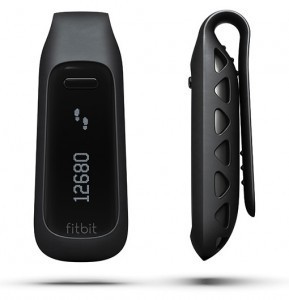 2) FitBit
2) FitBit$60 to $99, depending on model.
I love all of FitBit’s products. It’s the pedometer of the future! Want to help someone to get moving? Get a FitBit Zip. For around $60, this nifty device will calculate steps taken, monitor calories burned, calculate floors climbed, and wirelessly connect to the Internet where you’ll get reminders, personal bests, access to a community of health-minded people, and more.
The FitBit One ($99) is smaller and can also track your sleep cycles.
3) VegaSport Protein Bars
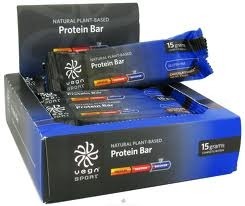
$41.99 for a box of 12.
I love the VegaSport line of products by Brendan Brazier. The protein bars are completely vegan and taste amazing. A box of those bars makes an amazing gift! Get them on Amazon or at your favorite health food stores (available everywhere in North America).
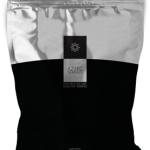 4) Aztec Salt
4) Aztec Salt$25
Know a foodie? Gift them a salt they’ve never heard about. Aztec Salt is harvested by hand in Mexico and is the best finishing salt I’ve ever tasted. It’s super moist and the dream salt for any foodie. Get it directly from the distributor.
5) Aquaovo water bottle

$25 to $29.
I own one of Aquaovo’s water filters. They are an amazing design piece and one of the best filtering systems out there. Want to gift something unique?
The Aquaovo water bottles are eco-friendly and look amazing. Plus, it’s a unique gift that stands out. They have a full selection of various bottles that you can check out at:
http://www.aquaovo.com/en/water-bottles.html
6) Cocotap
This ingenious little tool enables you to open a coconut and drink the water inside, even when it’s a hard one you pick from a tree. As you may have seen in my latest video, I initially struggled to use it, but later found a much easier way that was so obvious but that I missed in my first attempts. I wouldn’t leave on a trip without it! You never know where your next coconut will come from…
Check it out: http://www.cocotap.com/
7) AnnMarie Gianni’s skin care products
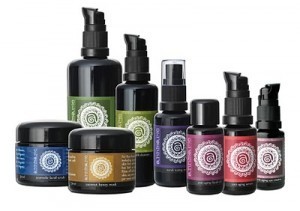
$50 to $75.
These are the best, most natural skin care products on the market. Period! The scent of the aromatherapy herbs used in the products is amazing. My suggestions: Go with a travel pack for the lady, and an Aloe Vera Facial Cleanser plus a Facial Oil for the gentleman. Get these amazing products directly from their website.
8 ) Box of Dates from Date People
$50.
Dates are so delicious, especially when fresh and in season. Fortunately, the date season happens to be right now. The best dates in the world are from the Date People, and they will ship to anywhere on the planet. Their dates made it to Costa Rica, where I spend the winter, so I’m sure they will make it to your corner of the world. Go for their Barhi dates; they’re the best. They also make the perfect gift. Go to: http://www.datepeople.net
9) DVD Set: “The Raw Vegan Cuisine”
This is a shameless plug, but more than 3000 customers who enjoyed my latest raw DVD series “The Low-Fat Raw Vegan Cuisine” can’t be wrong. I created these DVDs because I saw something missing in the raw food movements. All raw food recipe DVDs only showed how to make extremely high-fat recipes based on the “gourmet” raw diet popular these days. This series is different, and shows you a much healthier and tastier way to eat. It’s also a great way to introduce someone to raw foods, because unlike a book – where the reader may raise many objections based on the arguments, these DVDs go straight into food preparation, which answers the number one question people ask: “What can I eat on this diet?”
Check it out here:
http://www.fredericpatenaude.com/lowfatdvds/
NOTE: Use the coupon code GIFTIDEAS to save $40%. This coupon expires in 72 hours.
10) Extra Tamper for Vita-Mix Blender
$12.
If you know anyone who uses and abuses their Vita-Mix, chances are that at some point or another they’ve mishandled or lost their plunger. This has happened to me more than once. So, what could be a better gift than an extra pair of Vita-Mix tampers? Get them online: http://tinyurl.com/yathpjt
11) Glass straws
$35 for a set.
I love drinking coconuts and smoothies with a straw, but I don’t like to use plastic. I tried bamboo straws, but they ended up tasting weird and molding after a few uses. My favorite types of straws are glass straws. Good ones are hard to break, and they are reusable and toxin-free. They make a great gift as well. The best straws are made by Glass Dharma. They guarantee their straws against breakage with a lifetime warranty from the manufacturer. Get them from Renegade Health.
12) Veggie Chopper
This is my favorite kitchen tool by far. It’s called by different names, such as the “tomato chopper” or “salsa maker” or “Chop Wizard,” but the idea is the same: cutting perfectly square pieces of vegetables in no time. I use it all the time to make salsa, gazpacho, vegetable soup and salads. If you’ve seen the infomercials for it, then my advice is: believe the hype. It’s a great and cheap tool. The best one is the International Fruit and Vegetable Chopper by Progressive.
13) A Juicer
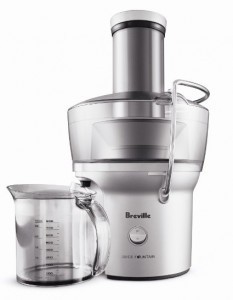
$99 to $149.
This is the BEST gift for anyone who has a little interest in health but has trouble getting started. Everyone would LOVE to have a juicer. Don’t gift a juicer to a seasoned raw foodist. That’s overkill. Give it to someone who really needs it. Plus, this gift doesn’t scream “I want you to lose some weight, my dear!” like an exercise DVD would.
My favorite all-around juicer is the Breville JE98XL Juice Fountain Plus 850-Watt Juice Extractor. The advantage of this juicer is the separate chute for refuse. But, the Breville BJE200XL Compact Juice Fountain 700-Watt Juice Extractor for $99 is also excellent. Don’t go for a cheaper model though, like the Hamilton line. Those break after regular use.
14) DeLonghi Slow Cooker
$115.
You can find a cheap slow cooker for $30 to $40, but they are low quality, often shedding their coating after a few uses. This slow cooker by DeLonghi is a stunning addition to any kitchen. Its pot is more compact and deeper, which works better for vegetarian meals (and anything else). It’s easy to clean and will last a long time. Find it on Amazon.
December 7, 2013
Why I Don’t Eat Organic
I’ll be honest: I don’t eat much organic food.
That may make me an oddity in the raw food world, or just someone who will admit to it.
At the moment, I would say that 75% of the food I consume is not organic.
Around 25% is.
Most of the fruits and vegetables I buy are not organic.
Most of the grains, condiments, and any animal food I may occasionally consume are organic.
So what’s my excuse for not being organic?
1) I get better non-organic fruit
I live in Montreal, close to an awesome market where I purchase the best-quality and best-tasting fruit imported by Italian grocers. They truly get the best stuff from all over the world, and it’s not organic. In my case, I choose quality over organic. The taste of the fruit, how long it lasts, and the variety are more important to me than the organic certification.
I do buy organic apples, bananas, and a few other items.
2) I don’t believe eating organic is necessary
Do I think that organic agriculture is better? I personally think that it’s not a main factor in health. Some people believe that organic food contains more vitamins and minerals, but a recent study showed that it’s not the case.
Others still think that the consumption of pesticides will lead to long-term health consequences, but so far that has not been established. If you eat at the bottom of the food chain (fruits, vegetables, etc. — exposure to pesticides is low, especially if you avoid the most-sprayed produce).
Some people eat organic because they want to avoid GMOs. That’s a discussion for another day, but I will say that I’m not worried about GMO fruits and vegetables. I will explain why in a separate e-zine, at the risk of being lynched by half of my readers.
3) I don’t live in a good location for organic food
When I lived in Vancouver or California, I ate a lot more organic food because more of it was available. Now, in my current city, I find the organic selection and prices to be lacking, but I’m much happier about my fruit selection overall. I’d take good quality commercial fruit over low-quality organic fruit any day.
In the end, what I think really matters in health is your overall diet (your percentage of fruits and vegetables, fiber intake, avoidance of stimulants, percentage of fat, and overall how clean your diet is), your fitness activities, and a few other factors.
Eating organic is not a factor that really impacts health in any major way.
At least, that’s my opinion about it.
You can do it because you want to promote organic agriculture. You can do it because you prefer the taste. But overall, I say that it’s a personal choice that will have limited impact on your health if you eat a diet composed mainly of fruits and vegetables.
There are a few foods that I would recommend purchasing organic, though: all animal products, as well as certain heavily sprayed fruits and vegetables, such as strawberries. You can find a list of those foods online by searching for it on Google.
If you can afford organic food and want to invest in it, then of course I don’t have anything against it. Go for it!
In my case, if I ate everything organic it would easily double or triple my overall food expenses. And at the same time, I would eat fruits that would taste worse, be less fresh, and not ripen properly.
So, I choose taste and convenience over something that hasn’t been proven to be a major factor in health. And I use the difference that I save to pay for a personal fitness coaching session once a week, for example. The latter has had a much bigger impact on my health than switching to organic food would.
You can certainly do this lifestyle without organic food!
To find out more about the high-raw lifestyle, check out:
December 5, 2013
How to find a good fruit market
Last week, I went inside a supermarket to buy some fruit. I normally don’t buy fruit at supermarkets, and I was reminded of the reason why on that occasion.
There was barely anything that looked edible, except for the vegetables. The apples were boring. The melons looked unripe. The grapes looked a bit shriveled and dirty. The other fruits were nothing exciting.
For most people, that’s the sight of the fruit selection at this time of the year. That’s if you don’t have access to a good fruit market.
I was told by a fruit importer in Montreal that there’s only 5 to 10% of produce that enters the country that’s worth anything. Everything else is low quality and is what you find everywhere.
Compare that to the market where I buy my fruits. At the same time of the year, I bought some of the best mangoes I’ve ever had in my life. The grapes were incredible. The melons were bursting with flavor. Everything I bought was extraordinary.
Why is there such a big difference between specialized fruit markets and regular supermarkets for fruit quality? The specialized markets order the best quality fruits through their own channels, while the supermarkets only want to compete on price. They don’t care about quality.
So where do you find a good fruit grocer?
It’s different in every city, and some are better than others. If there’s a big central market in your city, you might want to start there, and examine the shops around it.
In North America, the East Coast cities usually have much better importers than the West Coast cities. But on the West Coast you’ll find more farmers markets and organic food.
In Australia, the best market I found was the Queen Victoria Market. It’s got the flavor of a true year-round market. But in those markets, generally the best part is the little stores surrounding it. That’s where you’ll find some of the best importers in the country.
If you can’t find the markets I’m talking about, start with Chinatown. The produce stores in Chinatown are usually open to selling you fruits by the case and negotiating a bit on price.
Speaking of negotiation, the profit margin on a case of fruit is pretty small. As long as there’s a deal for the case versus buying by the pound, I don’t argue on price.
Once you find a good grocer, keep going there week after week to establish a relationship. Here are the elements of a good market:
- They should ideally ONLY sell fruits and vegetables and almost no other foods.
– They should sell you fruit by the case and be eager to do so.
– They should let you taste all the fruits before you buy them.
– They should give you a discount on the case.
– They should have the best-quality fruit only.
Eating fruit during the day and other foods after 6 p.m. is a great way to follow a high-raw diet. But for that, you need to have a good supply of the best-quality fruit. So start your hunt this week!
Frederic Patenaude's Blog
- Frederic Patenaude's profile
- 11 followers



